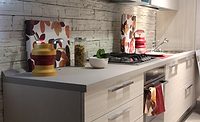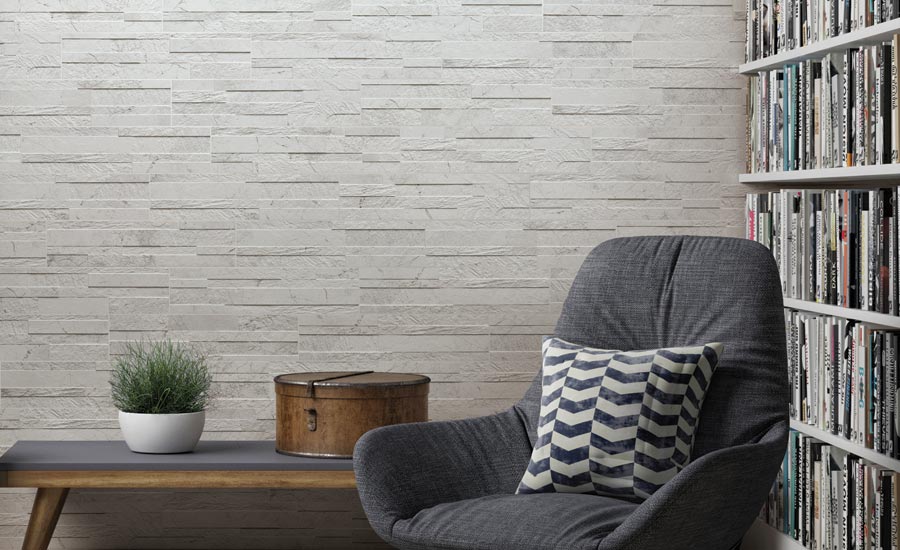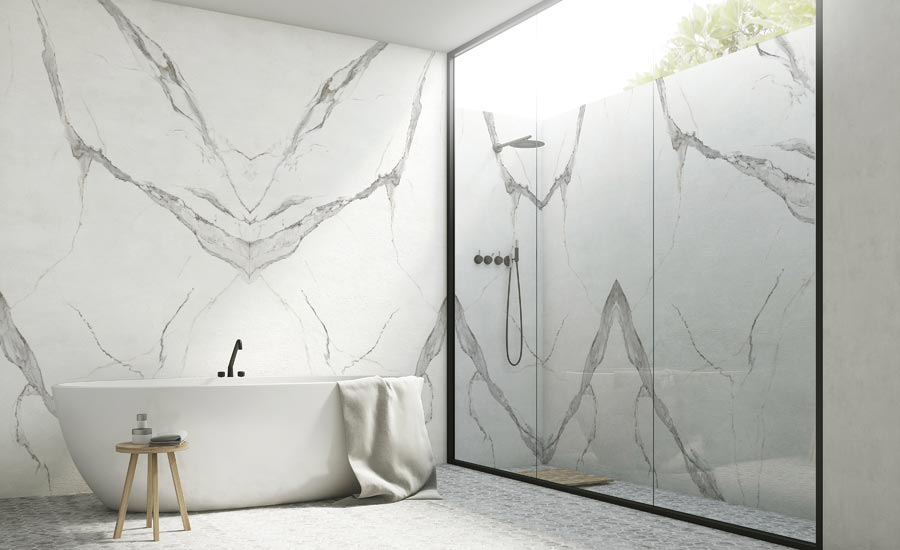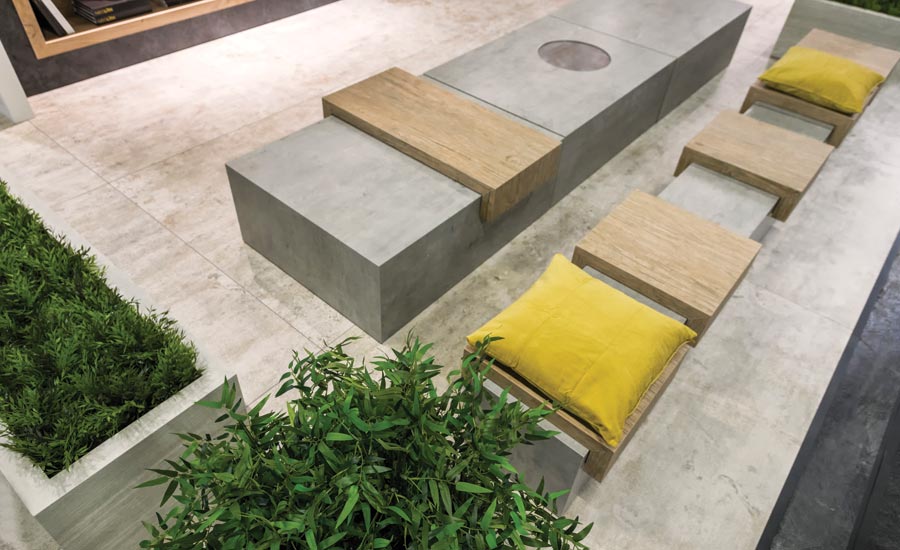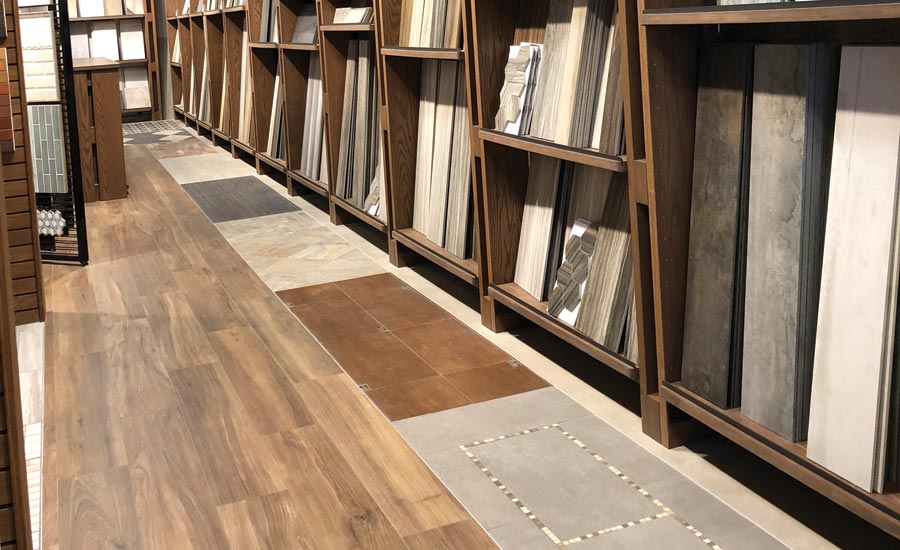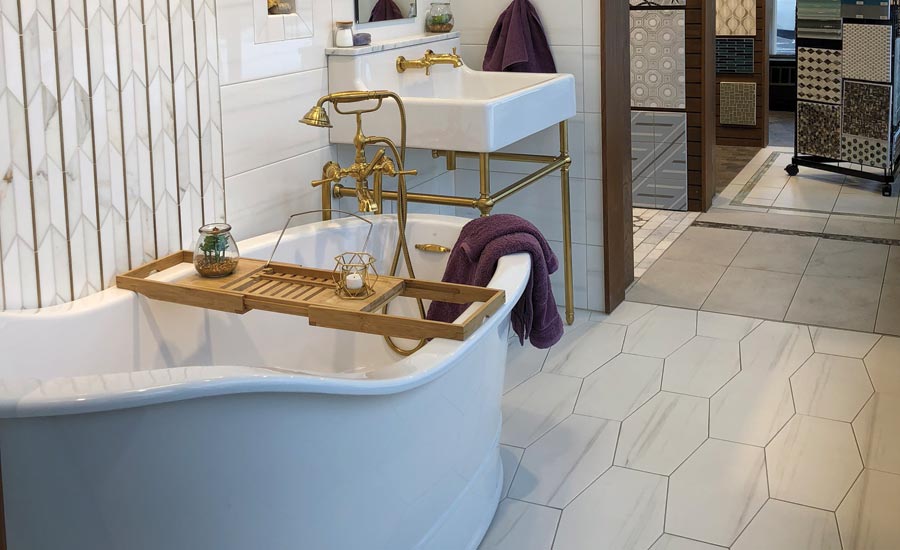Advances in Tile



Neolith expands its ¾-inch range of premium sintered stone surfacing solutions.







Innovations in the ceramic tile industry are everywhere, bringing products to market that offer homeowners and commercial specifiers greater technology and design options. Current trends in style and technology are providing retailers more opportunities to expand their ceramic and porcelain portfolios, to boost sales, and provide specifiers more solutions to create beautiful, hardworking residential and commercial spaces.
“Classic stone looks are very popular right now, as well as concrete looks,” said Peter Pental, chief operating officer of Pental Surfaces, an Architectural Surfaces Group company, and a tile and stone distributor that services 10 states in the western U.S. “Everyone wants a limestone/sandstone look without the maintenance. Large format tile is super popular as well, as it looks more elegant and higher end. Most tile on the market today is good quality, so it’s really the format that sets one tile apart from another.”
In term of large scale, gauged porcelain slabs continue to grow in popularity in North America. These nonporous surfaces are etch and stain resistant, making the material suitable for a variety of kitchen and bathroom projects—ranging from floors to walls to countertops—in both commercial and residential properties. Gauged porcelain panels provide the seamless look of continuous natural stone for a fraction of the cost of stone, and unlike natural stone, they require no routine maintenance and can be installed with minimal grout lines.
“Large-format thin tiles can be used as either slab or tile and are ideal for flooring since it allows for the look without the thickness issues that came with using stone slab on the floor,” Pental said.
Amber Leigh Hartman, Daltile senior marketing manager, said she’s seeing gauged porcelain panels, such as Daltile’s Panoramic collection, being embraced by more flooring dealers, particularly those who are also marketing themselves as kitchen and bath remodelers.
“You have to present yourself as someone who can provide a whole home design,” said Hartman. “We want to lead that charge, and we want to help our dealers connect our product to fabricators and installers. A big trend we’re seeing is creating a clean experience with large seamless slabs on the floor that match the countertop and match the wall. The opportunities with designing with slabs, and what traditionally would be a countertop material, are endless.”
Some are taking gauged technology a step further. Combining design and advanced cooking technology, Ascale by Tau slabs with TPB Tech technology enable induction cooking directly on the porcelain surface, eliminating the need for a glass-ceramic induction cooktop, making it possible to prep, cook and eat in a single space. “Technology has also been an area we’re seeing increased activity,” Pental noted.
Pental said A&D specifiers want to know the product will perform, and they are interested in the technical data and also love when a product is LEED certified. “When Pental started selling tile in 2004, we carried separate lines for residential and commercial use. Now it’s a hybrid because the looks and functionality can go either way.”
Taking a cue from the world of fashion, mixing patterns in decor is on the rise. Moving beyond the classic subway tile, there are many modern patterns in porcelain and ceramic tile offerings that are making bold statements in 2018.
“3D tile is very popular, as well as geometric and organic shapes including hexagon, diamond, esagono, and triangle,” Pental said. The three-dimensional looks for wall are creating visual interest by playing with shape and light reflection to define spaces.
“We’ve seen this trend emerging over the last year or two, and now the 3D metallic look is emerging as we see a lot of fixtures are going toward interesting metallic tones, lots of gold, metallic, brass,” said interior designer and Coverings show ambassador Alena Capra. “The light captures at so many angles, it creates a lot of visual interest. When it’s lit well, it pops and adds impact to a space.”
Experts also predict that a retro revival is occurring, with the use of midcentury and classic looks, such as encaustic, beginning to rise. On the modern side, natural stone porcelain looks are showing less movement and clean lines, with light colors best.
“The industrial looks can be anything from cement to oxidized metal—that real warehouse type feel,” Capra said. “Sometimes you don’t necessarily want to use the natural products; it’s easier to use tile for cleaning purposes, for maintenance, for longevity.”
Digital printing continues to improve, and today, manufacturers are photographing natural stone and printing it onto tile with virtually no repeat. “This way they can get the look of natural stone without the maintenance,” Pental added.
Read more: Tile America Debuts Custom Showrooms
Looking for a reprint of this article?
From high-res PDFs to custom plaques, order your copy today!




